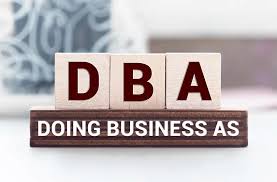As a small business owner, understanding and managing your taxes is crucial for the financial success of your venture. Small business taxes refer to the tax obligations and regulations that apply specifically to businesses with a limited scale of operations. It’s important to navigate this aspect of your business diligently to maximize deductions and minimize your tax liability. Utilizing reliable software for small business taxes can streamline the process and help you stay organized, ensuring accurate and timely filing. Whether you choose to file your small business taxes independently or seek professional assistance, having a clear understanding of the requirements and deadlines is essential. For beginners in the world of small business taxes, it’s advisable to familiarize yourself with the basics, such as types of business structures, allowable deductions, and record-keeping practices. Follow us for more information on small business taxes and how they work.
Small Business Taxes
Small business taxes encompass the various tax requirements and responsibilities that businesses must fulfill based on their size, structure, and revenue. It involves understanding and complying with tax laws, filing tax returns, and paying taxes to the relevant authorities. Small business owners need to be aware of the different types of taxes they may be subject to, such as income tax, self-employment tax, employment tax, sales tax, and property tax.
Navigating small business taxes can be complex, as the rules and regulations can vary depending on the jurisdiction and industry. Deductions play a crucial role in reducing the overall tax liability for small businesses. By taking advantage of eligible deductions, such as business expenses, equipment purchases, and employee benefits, small business owners can potentially lower their taxable income and maximize their tax savings.
To streamline the tax preparation process, there are software solutions available specifically designed for small business taxes. These software programs can assist in accurately tracking income, expenses, and deductions, generating financial statements, and preparing tax forms. Additionally, small business owners should familiarize themselves with the necessary steps to file their taxes, whether it’s through self-filing or seeking professional assistance. For beginners, understanding the basics of small business taxes is essential. This should also include record-keeping, estimated tax payments, and compliance with tax deadlines.
Proper management of small business taxes is crucial for financial stability and compliance. By staying informed, utilizing deductions, employing suitable software tools, and following proper filing procedures, small business owners can effectively navigate the tax landscape and minimize their tax burden. It is advisable for small business owners to consult with tax professionals or accountants for personalized guidance and to ensure accurate and timely tax reporting.
Small Business Taxes Deductions
Small business tax deductions refer to the eligible expenses that small business owners can subtract from their taxable income. These deductions can help reduce the overall tax liability and increase the business’s profitability. Common small business tax deductions include business-related expenses such as office rent, utilities, salaries, professional services, marketing expenses, and equipment purchases. It’s important for small business owners to keep detailed records of their expenses and consult with tax professionals. This is to ensure they are taking advantage of all available deductions.
Certain deductions are specific to certain industries or business activities. For example, home office deductions are available for businesses that operate from a designated area within the owner’s home. Self-employed individuals can deduct a portion of their health insurance premiums. Additionally, there are deductions for retirement contributions, business travel expenses, and education and training expenses related to the business. Understanding and documenting these deductions helps reduce taxes and maximize business resources.
Small business owners should stay updated on tax laws and regulations to identify new deductions or changes in existing ones. For proper deduction computations and tax code compliance, engage a small business tax professional or accountant. Taking advantage of available deductions can also help small businesses thrive and allocate more resources toward growth and expansion.
Software for Small Business Taxes
Software for small business taxes plays a crucial role in simplifying and streamlining the tax filing process for entrepreneurs. These software solutions are specifically tailored to the unique needs of small businesses, offering features such as expense tracking, income calculation, and automated tax form generation. With user-friendly interfaces and built-in tax knowledge, these tools help business owners accurately report their income, deductions, and credits, reducing the likelihood of errors and potential audits.
Moreover, small business tax software often provides comprehensive support for navigating complex tax regulations and staying up to date with changing tax laws. It offers guidance on eligible deductions, credits, and exemptions that can help maximize tax savings. By leveraging these software solutions, small business owners can save time, minimize stress, and ensure compliance with tax regulations, allowing them to focus on growing their business and achieving their financial goals. Whether it’s a cloud-based platform or desktop software, investing in reliable and reputable tax software can greatly simplify the tax preparation process for small businesses.
Also read TAX SOFTWARE FOR SMALL BUSINESS: Best for 2023.
How to File Small Business Taxes
Filing small business taxes requires careful preparation and adherence to tax regulations to ensure accurate reporting.
Here are the key steps to filing small business taxes:
- Organize your financial records: Gather all relevant financial documents, including income statements, expense receipts, and bank statements.
- Determine your tax form: Identify the appropriate tax form for your business structure, such as Schedule C for sole proprietors or Form 1120 for corporations.
- Calculate your business income: Subtract deductible expenses from your total revenue to determine your taxable income.
- Report income and deductions: Fill out the necessary sections of the tax form to report your business income and eligible deductions.
- Pay estimated taxes: If required, make quarterly estimated tax payments to avoid penalties for underpayment.
- Review and double-check: Carefully review your tax return for accuracy and ensure that all required information is included.
- File your tax return: Submit your completed tax return electronically or by mail before the deadline, typically April 15th.
- Keep records: Retain copies of your filed tax returns and supporting documents for future reference or in case of an audit.
By following these steps and consulting with a tax professional if needed, small business owners can fulfill their tax obligations accurately and efficiently.
Small Business Taxes for Beginners
For beginners, small business taxes can seem overwhelming, but understanding the basics can simplify the process.
Here are key points to consider:
- Determine your business structure: Different structures have different tax requirements and implications.
- Register for an Employer Identification Number (EIN): This unique identifier is used for tax purposes.
- Keep detailed records: Maintain organized records of income, expenses, receipts, and invoices.
- Understand deductible expenses: Familiarize yourself with allowable deductions to reduce your taxable income.
- Stay informed about tax deadlines: Be aware of filing and payment deadlines to avoid penalties.
- Consider hiring a tax professional: An accountant or tax advisor can provide guidance and ensure compliance.
- Separate business and personal finances: Maintain separate bank accounts and credit cards for business transactions.
- Use small business accounting software: Utilize software to track income, and expenses, and generate financial reports.
- Consider estimated tax payments: If you expect to owe $1,000 or more in taxes, quarterly estimated tax payments may be required.
- Stay updated on tax regulations: Tax laws and regulations change, so staying informed helps you comply with current requirements.
By familiarizing yourself with these aspects and seeking professional advice when needed, you can navigate small business taxes more effectively as a beginner.
What Tax Does a Small Business Pay?
Small businesses may be responsible for various taxes, including:
- Income tax: Small businesses are typically subject to federal, state, and sometimes local income taxes based on their net profit.
- Self-employment tax: Self-employed individuals, such as sole proprietors, must pay self-employment tax, which covers Social Security and Medicare taxes.
- Employment taxes: If you have employees, you are responsible for withholding and paying payroll taxes, including Social Security and Medicare taxes, as well as federal and state unemployment taxes.
- Sales tax: Businesses that sell taxable goods or services may need to collect and remit sales tax to the appropriate state or local authorities.
- Excise tax: Certain industries, such as alcohol, tobacco, or fuel, may be subject to excise taxes on specific products.
- Property tax: If your business owns real estate or personal property, you may be required to pay property taxes to the local government.
- Estimated tax payments: Small businesses often need to make quarterly estimated tax payments to cover their expected tax liabilities throughout the year.
The specific taxes your small business pays will depend on factors such as your business structure, location, and industry. It is crucial to understand your tax obligations and consult with a tax professional for accurate guidance and compliance.
How Do I Calculate Tax?
Calculating taxes for your small business typically involves the following steps:
- Determine your taxable income: Subtract your allowable deductions and exemptions from your total income.
- Identify the applicable tax rate: Consult the tax laws and regulations to determine the tax rate that applies to your taxable income.
- Calculate the tax liability: Multiply your taxable income by the applicable tax rate to determine the amount of tax owed.
- Consider deductions and credits: Take advantage of available deductions and credits to reduce your tax liability.
- Account for payroll taxes: If you have employees, calculate and withhold payroll taxes from their wages.
- Factor in estimated tax payments: If required, make estimated tax payments throughout the year to avoid penalties.
- Prepare and file tax returns: Complete the necessary tax forms and submit them to the appropriate tax authorities.
It is important to note that tax calculations can be complex, and it is recommended to seek professional advice or use tax software to ensure accuracy and compliance with tax laws.
Read: How To Calculate The Net Pay: Simple Guide
How Do You Calculate Sales?
Calculating sales for your small business involves adding up the total value of all goods or services sold within a specific period.
To calculate sales, you need to:
- Choose the specific period for which you want to calculate sales, such as a day, week, month, or year.
- Collect all records of transactions, including invoices, receipts, and sales reports.
- Sum up the total value of all sales made during the chosen time frame.
- Account for returns or refunds: Subtract any returned or refunded items from the total sales to get the net sales.
- Consider discounts or promotions. If applicable, factor in any discounts or promotions offered to customers.
- Use the calculated sales data to analyze trends, identify patterns, and make informed business decisions.
Accurate sales calculations are crucial for evaluating business performance, determining revenue, and planning for growth. Using point-of-sale systems or sales tracking software can streamline the process and provide more detailed insights into your sales data.
How Do You Calculate Sales and Profit?
To calculate sales and profit for your small business, follow these steps:
- Add up the total value of all goods or services sold within a specific period.
- Identify the direct expenses incurred in manufacturing the sold goods or services.
- Subtract the COGS from the total sales to get the gross profit.
- Subtract all operating expenses, such as rent, utilities, and salaries, from the gross profit.
- After deducting operating expenses, you will have the net profit, which represents the final earnings.
Monitoring sales and profit is essential for assessing business performance, setting pricing strategies, and making informed financial decisions. Regularly reviewing financial statements and using accounting software can simplify the calculation process and provide insights into your business’s profitability.
Read: PROFIT AND LOSS: Meaning, Examples & Difference
How Much is The Gross Profit?
A crucial financial indicator that shows a company’s profitability is gross profit. It shows the money that is still available after the total sales revenue has been reduced by the cost of making or purchasing the goods. You need to know the entire sales income as well as the cost of the goods sold in order to determine the gross profit. The company’s cost of products sold includes direct production or procurement costs. Businesses can also evaluate their capacity to bring in revenue and pay for operating expenses by estimating their gross profit. Use it as a starting point to make informed decisions about pricing, cost control, and business strategy.
What Is the Difference Between Profit and Revenue?
The difference between profit and revenue lies in their nature and purpose. Revenue refers to the total amount of money generated from sales or business activities, while profit represents the amount of money left after deducting all expenses from the revenue. Revenue is a measure of top-line growth and reflects the overall sales performance of a business. On the other hand, profit indicates the financial viability and profitability of a business by considering both revenue and expenses. While revenue shows the total inflow of funds, profit measures the net gain or loss from operations and takes into account factors such as costs, taxes, and other expenses. In essence, revenue is the income generated, while profit is the amount of money earned after accounting for all costs and expenses.
FAQS
Who is the biggest tax payer?
According to the Tax Foundation, the highest-earning Americans pay the most in combined federal, state, and local taxes. The richest quintile, or those making $130,001 or more yearly, paid $3.23 trillion in taxes as a group, while the bottom quintile, or those making less than $25,000, paid $142 billion.
In which state are the taxes the lowest?
Alaska, Florida, Nevada, South Dakota, and Washington are states without income taxes.
Who in the world pays the least in taxes?
Malta, Cyprus, Andorra, Montenegro, and Singapore are among the nations with the lowest tax rates in the world. In Antigua and Barbuda, there is no income tax, and there are no taxes on wealth, capital gains, or inheritance.
Related Articles
- MORTGAGE INTEREST DEDUCTION: Can You Deduct Mortgage Interest?
- EXPENSE MANAGEMENT TOOLS: Step-by-Step Guide and Best Tools to Use
- HOME OFFICE TAX DEDUCTION: All You Need to Know
- EXPENSE ACCOUNT: Definition, Types, Purpose, and Guide






